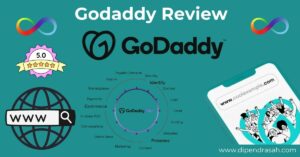Thinking about diving into the gig economy? Two names pop up at the forefront: Fiverr and Upwork. They’re the rockstars of the freelancing world, each with its own vibe and flavor. But which one’s the perfect match for you this year? Let’s dig into what makes these platforms tick and why they’ve carved out such a solid place in this digital hustle.
Now, Fiverr’s like your quirky friend who wears sneakers to a formal event. It’s all about those quick gigs and creative projects—think graphic design, voiceovers, or small coding tasks. You create a gig, set your price, and wait for the clients to roll in. It’s super accessible, even if you’re just dipping your toes into freelancing.
Upwork, on the flip side, feels more like stepping into a corporate office, where long-term contracts and skilled professionals shine. It offers a proposal-based system, which means you’ll bid for jobs and lay out why you’re the best fit. If you have a knack for writing detailed proposals and negotiating terms, Upwork could be your playground.
But hey, choosing the right platform isn’t just about jumping onto the bandwagon. It’s about aligning with a space that echoes your career goals and matches the kind of workload you thrive in. Whether it’s a side hustle or a full-time commitment, both Fiverr and Upwork have carved out niches that cater to different needs.
Historical Context: Evolution of Freelancing Platforms
Freelancing wasn’t always the bustling industry we know today. Take a trip back and see how Fiverr and Upwork got started and transformed how we work.
Back in 2010, Fiverr burst onto the scene, shaking things up with its one-of-a-kind ‘gig’ concept. Imagine ordering your favorite service with just a few clicks, all starting at $5. It brought a fresh perspective, making freelancing accessible to virtually everyone.
Upwork, however, emerged as a powerhouse through a merger of Elance and oDesk in 2015. This move combined years of industry expertise, offering a vast network for professionals seeking more significant or ongoing projects.
Over time, both platforms evolved to meet changing market demands. Fiverr expanded its service categories beyond the creative realm, while Upwork introduced a streamlined interface, attracting even more diverse job listings.
These changes weren’t just surface-level tweaks. They’ve reshaped how freelancers and businesses interact, driving more opportunities and revamping the way talent is scouted and hired worldwide.
User Experience: Signing Up and Getting Started
Jumping into these platforms is like grabbing a backstage pass to the freelancing world. Whether you’re a newbie or a seasoned pro, setting up on Fiverr and Upwork is an adventure you’d want to get right from the start.
On Fiverr, signing up feels like creating a mini self-portrait. You’ll craft your gigs, throw in some catchy titles, juicy descriptions, and set your price points. The platform’s intuitive interface guides you through the process, making it a breeze for those who love control and creativity in defining their services.
Upwork, though, gives off a more structured vibe. It’s like putting together a detailed resume. You’ll need to highlight your skills, experiences, and think strategically about your value. Crafting a polished profile is key since it’s your ticket to attracting potential clients in Upwork’s competitive neighborhood.
Now, here’s a pro tip: Pay serious attention to your profiles on either platform. Good photos, concise yet compelling descriptions, and clear skill listings boost your visibility and trustworthiness. A fleshed-out profile isn’t just about showcasing your talents; it’s a signal to clients that you mean business and are ready to deliver.
Both platforms cater to different styles but nail the essentials—making sure you’re properly equipped to present yourself and connect with clients fast. Take the time to get this step right, and you’re setting the stage for a successful gig-hunting experience.
Platform Features: What Sets Fiverr and Upwork Apart
When roaming through Fiverr and Upwork, their unique features quickly stand out, offering different paths to freelancing success.
Fiverr charms you with its simplicity and creativity-first approach. The platform is built around gigs, which are services you offer. Each gig can be spruced up with extras—think of them as bonus features that add value and cater to specific client needs. This model allows freelancers to be imaginative and clients to see clear, set prices upfront.
On the other hand, Upwork is where structure reigns supreme. It operates on a proposal-based system. You’ll sift through job listings and pitch for opportunities that align with your skill set. It’s a bit more traditional and task-focused, built for freelancers seeking long-term projects.
Both platforms support various industries, but they shine in different areas. Fiverr’s strength lies in quick, creative projects like graphic design or voice acting. Meanwhile, Upwork tends to draw larger projects and ongoing assignments, ideal for software developers, marketers, and writers.
And here’s a nugget of wisdom: explore both platforms deeply. Dive into the community resources and FAQs each offers. Understanding these tools not only helps in crafting the perfect profile but also in navigating the market trends—paving your way to smart freelancing choices.
Pricing and Payment: Navigating Fees and Charges
Understanding the pricing and payment structure is crucial when picking your freelancing platform. Fiverr and Upwork each have their own approaches, and getting familiar with them can help you maximize earnings.
Fiverr’s pricing is straightforward. You list your gigs, set your prices, and wait for clients to buy. Fiverr takes a cut of 20% from each gig you sell, which can seem steep, but this setup simplifies things by showing clients exactly what they’ll pay upfront. Additionally, Fiverr ensures timely payments through its automated system, so your hard-earned cash hits your account without a fuss.
With Upwork, things work a bit differently. There’s a sliding commission scale based on your earnings with a client—20% on the first $500, then it drops to 10% up to $10,000, and 5% beyond that. This approach encourages building long-term relationships with clients. Payments on Upwork are protected thanks to escrow, giving peace of mind when handling bigger projects.
To get the most bang for your buck, keep an eye on fees and adjust your pricing strategies accordingly. Creating budget plans or factoring in these fees when setting your rates can give you an edge—and more profit in your pocket. And remember, both platforms handle the billing system efficiently so you can focus on delivering stellar work to your clients.
Community and Support: Building Relationships and Trust
Engaging with the community and knowing where to turn for support can make your freelance journey smoother and more rewarding. Both Fiverr and Upwork have carved out spaces where freelancers can connect, learn, and find help when needed.
Fiverr’s community is bustling with forums and spaces where you can network or ask questions. It’s not just about sharing insights; it’s a great place to find tips on how to enhance your gigs or handle tricky client situations. Their support team is also pretty responsive, ideal for those times when you hit a roadblock.
Upwork takes community engagement seriously with its Upwork Community and Feedback forums. These are treasure troves of information, where you can learn from others’ experiences, pick up new strategies, or even share your success stories. The platform provides dedicated help through chat or email when issues arise, helping maintain a high level of trust and resolution efficiency.
Don’t underestimate the power of community. Engaging actively can be like having your team of industry buddies who’ve got your back. Plus, participating regularly might just lead to valuable collaborations or insights that could keep your freelance career thriving.
Whether you’re seeking advice, feedback, or support, knowing you’re not navigating the freelancing seas alone is comforting. Both Fiverr and Upwork build on that sense of community, reinforcing trust and facilitating growth in your professional journey.
Pros and Cons: Weighing the Benefits and Challenges
When sifting through Fiverr and Upwork, understanding the benefits and challenges helps align each platform with your freelance goals.
Fiverr shines with its straightforward gig system. You have the creative freedom to shape your services and set transparent pricing, which clients appreciate for its clarity. It’s fantastic for those who thrive on creativity and quick project turnarounds. However, the 20% cut Fiverr takes might pinch a bit, especially if you’re pricing competitively in a crowded category.
Upwork caters to freelancers who prefer a more traditional work route, with chances for steady, long-term gigs. The sliding commission scale is a huge win if you build repeat business, lowering fees the more you earn with a client. Yet, crafting proposals and competing with other freelancers can be time-consuming and require strategic bidding to get noticed.
Here’s a tip: use the strengths of each platform to your advantage. If you enjoy knocking out quick gigs, Fiverr might be your playground. But if you’re eyeing consistent, long-haul projects, Upwork’s environment could suit you better.
Ultimately, both platforms come with their unique perks and hiccups. Mapping these out relative to your skills and work style can spell the difference between a fulfilling freelance career and a frustrating experience.
Case Studies: Real-Life User Experiences
Diving into real-world stories paints a clearer picture of what life is truly like working on Fiverr and Upwork. These platforms have powered countless freelance journeys, offering wins and challenges along the way.
On Fiverr, many users have transformed small gigs into thriving businesses. Imagine starting with a simple graphic design offer, and through strategic updates and gathering stellar reviews, scaling to a premium service provider. This ‘gig-to-greater’ transformation often hinges on creativity, consistency, and superior customer service.
Then there’s the freelancers who’ve mastered Upwork’s proposal process. Some have built long-term client relationships and turned initial gigs into repeat business, leading to steady income. It’s all about nailing that first impression with a top-notch proposal and, of course, delivering quality work that makes clients return.
Learning from these stories highlights the importance of adaptability. Adapting your approach based on what works (or doesn’t) for others can fuel your success. Engage with testimonials and case studies, dissect what propelled others’ success, and tweak it to fit your unique path.
Exploring these journeys gives you a realistic view of how freelancing on these platforms can evolve. Use these insights to mold your strategy, find motivation, and bring your freelancing dreams to life.
Conclusion: Making the Right Choice for Your Career
Choosing between Fiverr and Upwork ultimately hinges on what you want out of your freelance career. Each platform has carved out its own niche, offering distinct ecosystems that cater to different freelance needs.
If you’re all about short-term projects and thrive in a creative gig environment, Fiverr’s straightforward model could be your jam. The ability to define your services and set transparent pricing independently can be liberating if creativity and quick turnarounds are your forte.
On the other hand, Upwork may suit those seeking more structured, ongoing work arrangements. Its proposal-based system favors freelancers who are comfortable crafting strong pitches and pursuing long-term client relationships. The potential to reduce commissions through repeat business offers a rewarding angle for those who nail the art of client retention.
Ultimately, it’s about aligning with a platform that fits your skills, lifestyle, and career goals. Take into account your strengths, the kind of projects you enjoy, and the clients you want to attract. Both sites offer paths to success; you just need to choose the one that feels right for your journey.
Remember, no choice is set in stone. Many freelancers find value in exploring both platforms as they evolve and grow in their careers. So keep an open mind, adapt, and let your experiences on Fiverr or Upwork shape where you’ll venture next.



